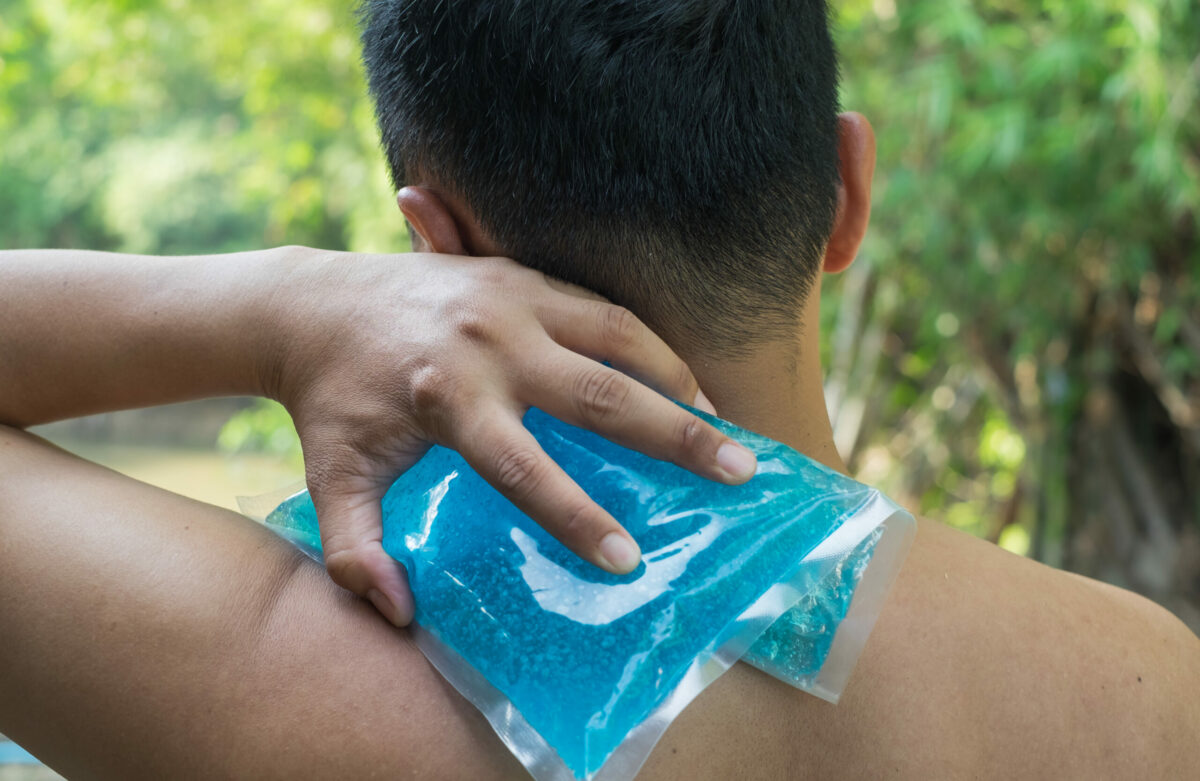
You are out for your daily walk and accidentally trip on uneven pavement. Ouch—you have sprained your ankle. Ice or heat? Which is better to help with the pain? While each situation is unique, and there is no ultimate heat vs ice therapy rule, doctors generally agree that ice is typically used for acute or new injuries, and heat is used for treating chronic muscular pain, aches, and stiffness. If you are not sure if ice or heat is better for you, it is always best to consult your doctor. But here are some common situations where ice and heat can help.
Ice Therapy Works for New Injuries
If you have a recent injury (within the last 48 hours), ice can help reduce swelling and inflammation by reducing blood flow. It can also reduce bleeding into the tissues, reduce muscle spasms, and numb your pain. Some common issues ice therapy can help include:
- Strains: injuries of a muscle and/or tendon. Strains can benefit from a combination of both ice and heat when they occur, using ice for the first 72 hours—then switching to heat. Common strains include:
- Achilles tendon
- Back
- Hamstring muscle
- Quadricep
- Calf
- Elbow
- Shoulder
- Hand
- Neck
- Sprains: stretches and/or tears of a ligament. Sprains can also benefit from a combo of ice and heat, using ice for the first 72 hours, then switching to heat. Common sprains include:
- Knee
- Wrist
- Finger
- Toe
- Hand
- Ankle
- Tendinitis: a painful inflammation issue that affects the tendons. A common cause of tendinitis is repetitive activities that can affect your:
- Elbow (tennis)
- Knee
- Shoulder
- Hip
- Achilles tendon
- Headaches and Migraines: ice can help soothe a throbbing pain in your head. A cold wrap over the forehead and eyes can help reduce the throbbing pain caused by a migraine.
- Spasms: sudden, involuntary movements or muscular contractions that commonly occur in the back or neck soon after an injury. Sometimes, heat can be applied to spasms as well as ice. Consult your physician about what is best for your situation.
 How to Apply Ice as Therapy
How to Apply Ice as Therapy
Apply an ice pack as soon as possible after an injury. Wrap the ice in a towel and apply it to the affected area. Do not apply the frozen item directly to the skin to avoid causing damage to the skin and tissues. Use cold therapy for short periods of time—10 to 15 minutes at a time is best—several times a day, but no more than 20 minutes. If you elevate the injured area, you may get better results.
Heat Therapy for Chronic Muscle Aches and Pains
Heat therapy works by improving circulation and blood flow to a sore or injured muscle. Increasing the temperature even slightly can soothe discomfort, increase muscle flexibility, and may heal damaged tissue. Some common conditions heat can help include:
- Osteoarthritis: inflammation of joints or pain caused by worn-away cartilage in joints often occur in such common places as:
- Elbows
- Knees
- Shoulders
- Fingers
- Stiff and Painful Muscles: muscle stiffness often arises after changing exercise routines, overusing muscles, being physically inactive for long periods of time, and aging.
- Persistent Spasms: sudden, painful, involuntary movements or muscular contractions that commonly occur in the back or neck from former injuries, overuse, poor posture, heavy lifting, or stress.
- Post-Inflammation Strains: an injury of a muscle and/or tendon. Muscle strains can benefit from a combo of ice and heat, using ice for the first 72 hours to reduce inflammation, then switching to heat.
- Post-Inflammation Sprains: a stretch and/or tear of a ligament. During the first 72 hours after a sprain, heat should be avoided to prevent increased swelling and inflammation. After about 72 hours, heat can then be used to increase blood flow and help overall healing.
How To Apply Heat to Reduce Pain
Heat therapy works best when used for a lengthy time, unlike cold therapy, which needs to be limited. Generally, heat therapies should be applied to the painful area for up to 20 minutes, 3 times a day. There are both dry and moist heat packs available. Studies show moist heat packs act more quickly but can be used for less time. Other heat therapies include:
- Heating pad
- Hot water bottle
- Hot compress
- Hot bath (between 92 and 100 degrees)
When to See a Doctor If Pain Persists
Here is a good rule of thumb: If ice therapy has not helped your new injury or reduced swelling within 48 hours, call your doctor.
If heat therapy has not helped reduce pain or discomfort after a week, or if your pain increases within a few days, it may be time to see your doctor.
At EmergeOrtho—Blue Ridge Region, we understand that it is often challenging to decide whether ice or heat is better for your pain. When conservative at-home therapies have not reduced your pain, come see us. Schedule your appointment today so you can emerge stronger, healthier, and better.







